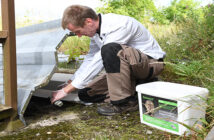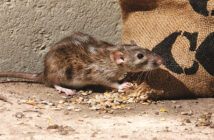In Strasbourg on 13 January 2009, members of the European Parliament voted in favour of proposed legislation to restrict the use of agricultural pesticides.
Although this proposed revision applies to agricultural pesticides, the pest control industry would dismiss it at its peril. Read on to discover why.
| Currently all agricultural pesticides sold within the EU are governed by Directive 91/414/EEC. Certain activists have long argued that this Directive does not go far enough to protect human health and the environment. Partly in response to such demands, the European Commission has proposed a new Thematic Strategy on Pesticides – this would further restrict which pesticides can be used in the EU. The legislation would result in an essentially arbitrary ‘hazard based’ assessment of pesticides as opposed to the previous ‘risk based’ assessment.
As with all EU pesticide regulatory matters, the background, the proposals and the amount of lobbying by affected parties runs into many millions of words. However, a particularly useful summary has been put together by the Campaign for Fighting Diseases in a paper entitled The EU’s Nasty Bite – a copy of which can be downloaded here. So how does all this affect the pest control industry? In brief, this new legislation will result in anything from 14% to 23% (depending on whose estimates you support) of currently used crop protection products being withdrawn from the market. So what? Readers should remember that products used in public health are virtually all entirely based on crop protection actives. Without agricultural use, production and more significantly, innovation, for public health would almost certainly be unsustainable. Products withdrawn in agriculture would mean a further reduction in the choice of products available to pest controllers, or perhaps even more importantly on a global scale, the elimination of products available for large-scale public health programmes, such as malaria control. In addition, it seems likely that revised regulations will be introduced covering pesticide use in sensitive public areas, such as near schools, parks or hospitals. And if this were not enough, what does the future hold should the EU proceed to adopt the same criteria and apply them to the Biocidal Products Directive? As surely it will. A more detailed review of these events can be found in the forthcoming edition of Pest magazine. |



